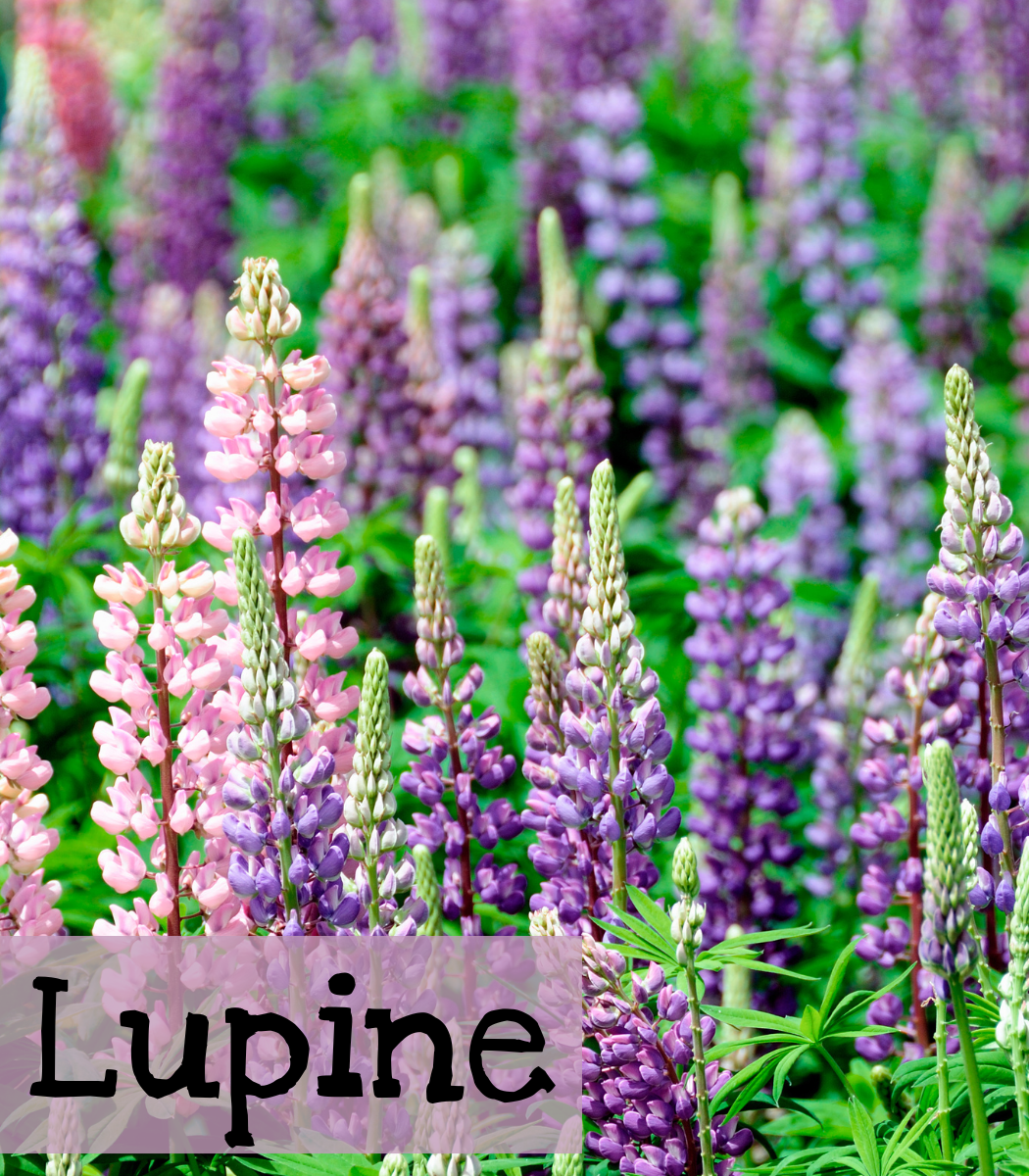
Lupine
Lupine can be either an annual or a perennial depending on the variety. These beautiful blooms are good for arrangements.
|
N/A |
|
Varies depending on the variety |
|
Easy |
|
Intermediate |
|
3-5 years if properly stored |
|
Annual or Perennial, depending on the variety |
|
10-28 days |
|
Scarify and soak overnight |
|
Surface Sow |
|
Varies depending on the variety |
|
Need light to germinate Full sun tolerates part shade |
|
From spring through summer |
|
N/A |
|
No |

Growing Tips

How to start
Start indoors: About 4-8 weeks before the last frost date. (Mid-March – Early April for Jefferson, GA)
Transplant seedlings: After the danger of frost has passed. (May 1 for Jefferson, GA)
Direct Sow: After the danger of frost has passed. (May 1 for Jefferson, GA)
How to Grow
Lupine is a cool-weather plant and might be a bit more challenging to grow in the South due to its dislike of high humidity and love of cooler summer nights. Start seedlings 4-8 weeks before the last frost. Scarify the seeds by carefully nicking the hard outer coating of the seed and soak the seeds overnight.
Seeds need light for germination so gently press 2-3 seeds into the seed starting mix. Then place them under grow lights. Transplant after hardening off and after the danger of frost has passed. To direct sow, gently press the seeds into the soil after scarification and soaking overnight. Thin or space plants to 18 inches apart.
Care
While lupine will tolerate part shade, to get the most out of your plant, plant it in full sun beds. Lupine also likes slightly acidic, well-draining, moist soil. Mulch 1-2 inches to help keep the roots cool and retain moisture. You can remove spent blooms and the plant may reward you with a second blooming in late summer or fall. Lupines do prefer cool summer nights and dislike humidity. In the South, they might benefit from afternoon shade, and make sure you have proper spacing between plants to encourage good airflow.
Lupine grows from a long taproot because of this established plants don’t transplant well. To keep the soil from drying out and to help establish a deep and healthy root system, give 1 inch of water per week. To check the soil moisture, feel with your finger. The soil should feel damp at least 1 inch down. Water in the morning to give leaves time to dry. Taller varieties may need steaking and it may take one year for fully spectacular blooms.
Seed Saving

Isolation Distance
Insect dependent for pollination. Isolate 1/4 mile to prevent cross-pollination.
Instructions
Select healthy, robust plants free of any signs of disease or insect infestation for seeds. Seeds carry the traits of the parent plant. Choose plants that exhibit the traits you wish to preserve. Consider bloom size, color, and shape, as well as blooming time.
Allow the biggest and healthiest blooms to mature on the plant. Cover the seed head with a fine-mesh bag as soon as flower petals shrivel and die. Use an elastic band to hold the bag in place. This prevents seeds from spilling onto the soil before harvest.
Clip the flower head from the main stem once the seeds are dry and dark. Separate plant debris from the seeds by removing the mesh bag and placing the flower head in a paper bag and shaking to loosen the seeds. Seeds settle to the bottom of the bag. Remove plant debris by hand. Note: Plants grown from saved seeds may not retain the color of the parent plant.
Features
- Attracts pollinators
- Attracts hummingbirds
- Fragrant
- Good cut flowers
- Drought tolerant
- Easy to grow and maintain
- Fixes nitrogen in the soil

Scarify the seeds by carefully nicking the hard outer coating of the seed and soak the seeds overnight.
In the South, afternoon shade might benefit lupine as they like cool summer nights. Lupine also dislikes humidity. Proper plant spacing will help maintain good airflow between plants.
For perennial lupine, mulching during the winter is beneficial.
Plants grown from saved seeds may not retain the color of the parent plant.
Sources:
